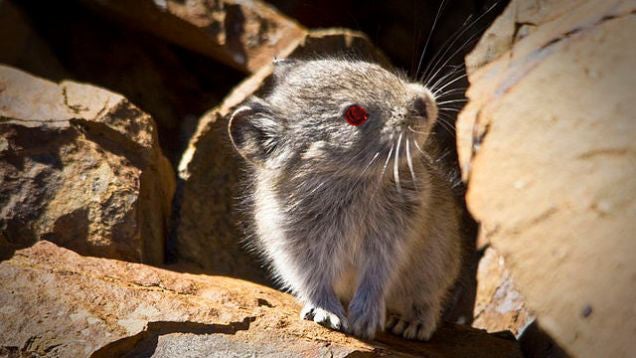 |
| The ants really like the trees they like and really don't like the trees that they don't like. |
In the real world, lemon ants only like one type of foliage: that of the Diuroia hirsuta tree. And the lemon ants have figured out quite the way to make sure that they only have to deal with the trees that the like. The ants climb up all other plant life in an area. When they are at the base of the green leaf stems on non-Diuroia hirsutas, the ants inject formic acid into the plant where the stems meet the leaves. The acid kills the leaves and, when enough leaves have died, the plant dies as well. Eventually, entire portions of the forest are covered only in Diuroia hirsuta. Indigenous societies referred to these areas of the forests as "Devil's Gardens" and believed that they were haunted.
 |
| In a cross-reference to copyright interest, the owner of thisphotograph is raising funds for Insects Unlocked, a program that will make thousands of nature and animal photographs publicly available. If you'd like to see more high quality images like these online, you should donate. |
The base creature has a poison attack, but I'd want to switch it out for our ant's acid attack. I think two different types of acid attacks would be appropriate. First, there's the option to inject acid into a victim. I think this would be fun to treat as a spear-like reach weapon: because the injection method is long, the ant can attack someone 10 ft. away. But, because the ant has to use the end of its injector, it can't attack someone 5 ft. away. I'm thinking 4d6 acid damage on a successful attack. Advanced versions of this ant might also cause bleed damage (1 or 2) if they strike with their injector. It might also be fun to give the injector a separate AC and hit points and allow characters with slashing or piercing weapons to cut it off (releasing a poison glob, of course).
Additionally, our ants are going to be able to use their injectors to spray a line of acid--at the expense of losing the ability to use any other acid attacks for 10 minutes while their acid rebuilds. This will be a 15' line causing 2d6 acid damage or 1d6 to everyone that succeeds on a DC (whatever is approrpriate for a CR 3-5 monster) Reflex save.
It would also be fun to figure out exactly what the effects are of these plants. On one hand, maybe they are monsters in and of themselves, a la assassin vines. But, it might also be fun to make them an environmental effect. Maybe passing through the spines causes some hp damage or an effect like fatigue. Maybe the exude a gas that has another effect on players, perhaps fear--or even aggression?
Finally, where are these acid ants coming from? That's where we need some sort of new fiendish undead and/or fey creature that corrupts the eggs of normal ants to create our monstrosities. In fact, I have an idea for exactly what causes these things for my homebrewed Cordelon campaign. That won't start back up until the summer, but I'm already excited about disgusting my players!
Collared Pika
For most of the year, this cute little thing is a vegetarian. But, during the winter food is scarce and it craves brains. A normal pika is tiny (probably even diminutive in game terms). It's brain eating is also confined to waiting for animals to die nearby so that it can scavenge their brains. That's a little tame for an RPG monster.
The pika loses some of its charm by increasing its size. It's far more fun to develop as a swarm. This is even more fun if the PCs first encounter pikas in the summer, when they are harmless. Come the winter, the PCs are in for a surprise. I'd start with the stats for a rat swarm. But, I'd take the individual creatures down a level to diminutive to account for pikas being smaller than rats. That also makes them immune to weapon damage, which is kind of the whole point of a swarm.
I'm not sure about how exactly to develop mechanics for brain hunger. Maybe after taking damage the character makes a Fort save. Failure means that on subsequent rounds the character will take Int & Wis damage to account for brain nibbles. Rinse and repeat with the swarm doing normal damage on its first round and then ability damage if the character fails the save. Re-save every round. If the character makes the save or gets free of the swarm the swarm has to restart the process with hit point damage and forcing the saving throw.

No comments:
Post a Comment